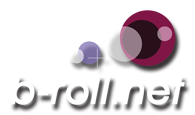 You’ve heard of the seven deadly sins, right? How about the seven social media wins? According to new media researcher Augie Grant, news organizations need to look at seven primary uses for social media.
You’ve heard of the seven deadly sins, right? How about the seven social media wins? According to new media researcher Augie Grant, news organizations need to look at seven primary uses for social media.
The following are excerpts from Grant’s article, published in the University of South Carolina’s Convergence Newsletter.
1. Report: The simplest way to use social media is to deliver a message such as a headline or brief summary directly to the audience. This function treats these media simply as new distribution channels – another way to get information to the public.
2. Promote: One of the more frequent uses of social media by journalism organizations is the promotion of content, with teases and headlines on Twitter and Facebook linking directly to Web versions of stories.
3. Share: The power of social media is more effectively tapped when both the journalist and the journalism organization realize the flow of information must be bi-directional, with users given the opportunity to share their experiences and perspectives in the process of building and following up a story.
4. Engage: Beyond sharing, social media offer the capability to engage users in a manner not available in traditional media. The key distinction between sharing and engaging is that the latter involves creating an online community where the agenda, focus, and content are as much the product of what readers bring to the site as what the organizer creates.
5. Follow: Social media have also become critical tools to assist reporters in gathering information and identifying sources.
6. Sourcing: The social network surrounding individuals and issues provides a wealth of sources that can be called on for comments and background information.
7. Defend: The final function of social media for journalists requires constant surveillance to determine where and when your organization, reports, and reporters are being mentioned. Good mentions and sharing of your content are a plus, but it is equally important to know when negative information is being circulated and then to know the social graph and influence of the complainer.
Most of these applications are often discussed within journalism circles, but the idea that social media can be used to gauge how your organization is perceived is a good one to have on the list.
The temptation in many newsrooms is to ignore criticism, but by monitoring social media references more closely, you may be able to head off an image problem before it does real damage.
Beware of getting into social media battles with your audience, but do defend accurate reporting and correct misquotes and other erroneous information. Your credibility is on the line in social media, too.
